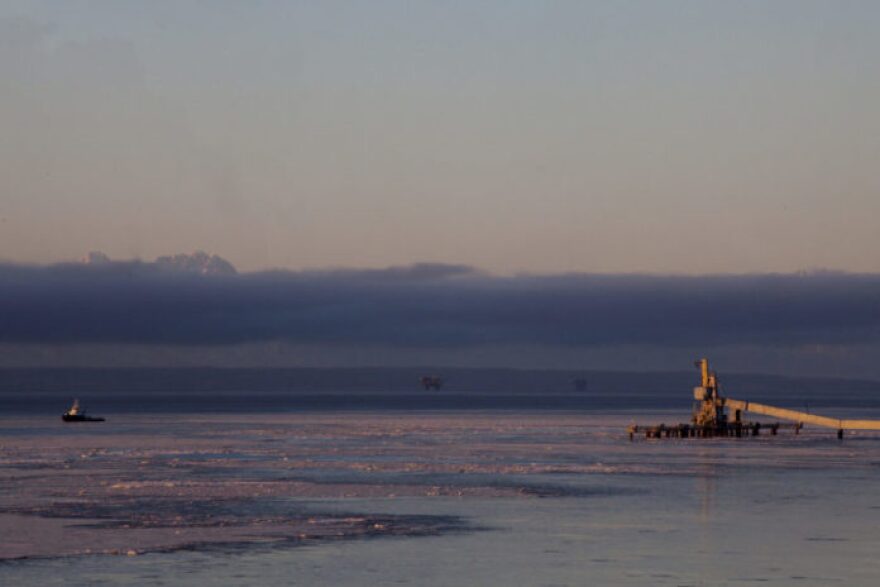Oil and gas company Hilcorp said it’s not currently planning to replace an inactive pipeline with a history of leaks in Cook Inlet and that, for economic reasons, it won’t reactivate at least one of the oil-producing platforms the line connects to.
The old, eight-inch-wide pipeline delivers gas to a system of oil platforms in the inlet, known as the Middle Ground Shoal Unit. That fuel gas is then injected into wells to help bring oil up to the surface, a technique known as gas lift.
The line has sprung a leak several times — most recently, in 2021, when an undersea leak about six miles offshore from Nikiski let out, initially, between 75,000 and 150,000 cubic feet of natural gas per day for about two days. Hilcorp is known for buying and reinvigorating old infrastructure and is currently Cook Inlet’s biggest oil and gas producer.
In response, the federal Pipeline and Hazardous Materials Safety Administration ordered the company to repair the line and come up with a plan for its replacement.
In a proposal filed with the Alaska Division of Oil and Gas April 1, the company said the costs associated with fixing the line didn’t make sense economically, and that it wouldn’t be working on repairs to the line this year.
It added that one of the platforms that the line goes to, Platform C, has “reached its economic limit and will not be returned to production.” The other, Platform A, “has potential for future reactivation, but not as a stand-alone project,” according to the report. It said the costs of repairing or replacing the pipeline were too much to justify the 3 million barrels of oil equivalent it estimates could be recoverable from that platform.
But it said it could reactivate Platform A in the future if it were to build a potential new offshore platform, to access a “known gas structure” north of the unit. The company said in its plan of development it will consider costs related to construction this year, as well as whether it can access the gas from existing units, already.
Both platforms A and C were installed in the 1960s.
Those platforms haven’t been producing oil since the line sprung a leak two years ago. The unit — which Hilcorp acquired in 2012 — was previously responsible for about 930 barrels of oil a day, according to the state’s Division of Oil and Gas.
Oil production bears lower costs and higher profit than gas production in Cook Inlet, and the loss means less revenue to support Hilcorp’s natural gas exploration and production in the inlet. That gas production has been under the microscope since the company announced last year it couldn’t guarantee meeting supply on the Railbelt beyond its current contracts.
And the company is already looking at other ways to meet energy needs and repurpose its shut-down platforms, rather than removing them. It has plans to test tidal power technology on two other platforms in the Middle Ground Shoal Unit the Baker and Dillon platforms, which have been offline for years.
This article has been corrected to indicate the 3 million barrels of oil equivalent is not a per-day measurement.




